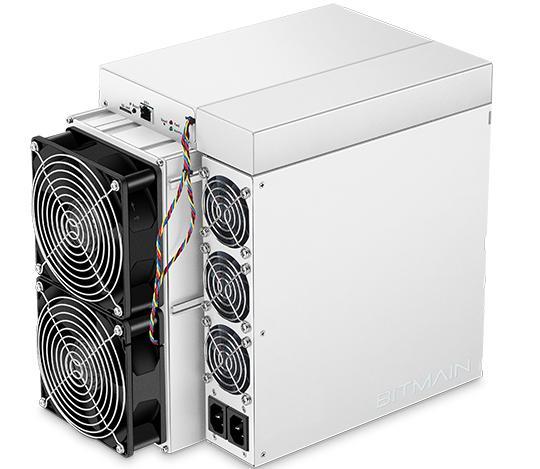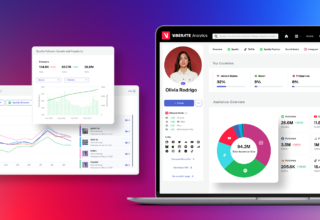
Crypto mining is an exciting and rewarding way to get involved in the digital currency world. If you’re interested in mining but aren’t sure where to start, don’t worry.
Mining can seem intimidating, but with the proper knowledge and preparation, you can successfully enter the world of cryptocurrency mining.
Here’s a guide to help you get started, covering everything from choosing your cryptocurrency to considering energy costs.
Table of Contents
1. Choose Your Cryptocurrency
The first step to getting involved in cryptocurrency mining is choosing the cryptocurrency you want to mine.
Hundreds of cryptocurrencies are available, but the most popular ones include Bitcoin, Ethereum, Litecoin, and many others.
Each cryptocurrency has its mining process, difficulty level, and rewards, so it’s essential to research before deciding which one to mine.
Bitcoin:
As the first and most well-known cryptocurrency, Bitcoin mining is highly competitive and requires specialized hardware known as ASIC (Application-Specific Integrated Circuits) miners. It also consumes a lot of energy, making it less feasible for casual miners with limited resources.
Ethereum:
mining is a bit more accessible for newcomers, as it can be done using GPUs (Graphics Processing Units), which are commonly found in gaming computers.
However, Ethereum is transitioning to a proof-of-stake system, which means mining may become obsolete, so you’ll need to keep up-to-date with its developments.
Litecoin: Litecoin is often considered a “lighter” version of Bitcoin, with a faster block generation time. Mining Litecoin is more accessible to beginners, especially those using GPUs.
Before deciding on a cryptocurrency, research its mining process, hardware requirements, and potential profitability.
Some newer cryptocurrencies may have lower mining difficulty, making them easier to mine with consumer-grade hardware. Consider how competitive the network is and whether it’s worth the investment.
2. Get The Right Hardware
Once you’ve selected your cryptocurrency, the next step is acquiring the right hardware. Cryptocurrency mining requires specialized equipment to solve the complex cryptographic problems that validate transactions and add new blocks to the blockchain.
ASIC (Application-Specific Integrated Circuits):
ASIC miners are high-powered machines designed specifically for cryptocurrency mining. They are efficient, fast, and purpose-built for specific cryptocurrencies like Bitcoin.
However, ASIC miners are expensive, and because they are tailored to mine a single type of coin, they are not versatile across different cryptocurrencies.
ASICs are a good choice if you’re serious about mining Bitcoin or another highly competitive coin, but they require a significant upfront investment.
GPU (Graphics Processing Units):
GPUs are the graphics cards commonly used in gaming computers. These cards are more versatile than ASICs and can mine various cryptocurrencies, including Ethereum.
GPUs are generally more affordable than ASICs, and they are also easier to upgrade. However, they tend to be less efficient when mining than ASIC miners, especially for highly competitive coins like Bitcoin.
When choosing your mining hardware, consider your budget, the cryptocurrency you want to mine, and the potential for future upgrades.
Be sure to factor in the hardware’s performance in terms of hashing power (how fast the system can solve mining problems) and energy efficiency.
3. Join A Mining Pool
Mining alone, or solo mining, can be very difficult and time-consuming. The chances of solving a cryptographic problem on your own and receiving a block reward are extremely low, especially for popular cryptocurrencies like Bitcoin.
To increase your chances of success, most miners join a mining pool. A mining pool is a group of miners who combine their computational power to increase the likelihood of solving a block.
When the pool successfully mines a block, the reward is distributed among the pool members based on their contribution to the total mining power.
Mining pools make mining more predictable and allow smaller miners to receive steady rewards.
Many mining pools are available, each with different fees, payout structures, and supported cryptocurrencies.
Some pools focus on specific coins, while others may allow mining multiple coins. Before joining, research the pool’s reputation, payout method, and network size.
4. Install Mining Software
After acquiring the necessary hardware and joining a mining pool, you will need mining software to connect your hardware to the cryptocurrency network.
Mining software allows your hardware to communicate with the blockchain and perform the necessary computations to mine cryptocurrency.
The type of software you use will depend on the cryptocurrency you’re mining and the hardware you’re using.
Make sure to download mining software from a reputable source, as many malicious programs can harm your computer.
Follow the installation instructions and configure your mining software to connect to your pool and start mining.
5. Consider Energy Costs
One of the most significant factors to consider before getting into cryptocurrency mining is the cost of electricity. Mining requires a substantial amount of electrical power to run your hardware 24/7.
Depending on the cryptocurrency you’re mining and the efficiency of your hardware, your electricity bills can become quite high.
Before you invest in mining hardware, calculate how much electricity your setup will consume and compare that cost to the potential mining rewards.
Some areas have much cheaper electricity than others, making mining more profitable in specific regions.
If you’re in an area with high electricity costs, mining for certain cryptocurrencies may not be worth mining, as the energy expenses could outweigh the rewards. On the other hand, if you’re in a region with low-cost or renewable energy, mining can be more profitable.
Final Thoughts
Getting involved in cryptocurrency mining can be a rewarding and profitable if approached correctly.
By carefully selecting your cryptocurrency, investing in the right hardware, joining a mining pool, and considering energy costs, you can set yourself up for success.
However, staying informed about the ever-changing cryptocurrency landscape is important, as mining difficulty and profitability can fluctuate based on market conditions and technological advancements.
Remember, cryptocurrency mining requires significant investment in both time and resources. Be prepared to dedicate yourself to learning about the process, optimizing your hardware, and adapting to changes in the industry. With the right knowledge and preparation, you can take your first steps toward becoming a successful cryptocurrency miner.














